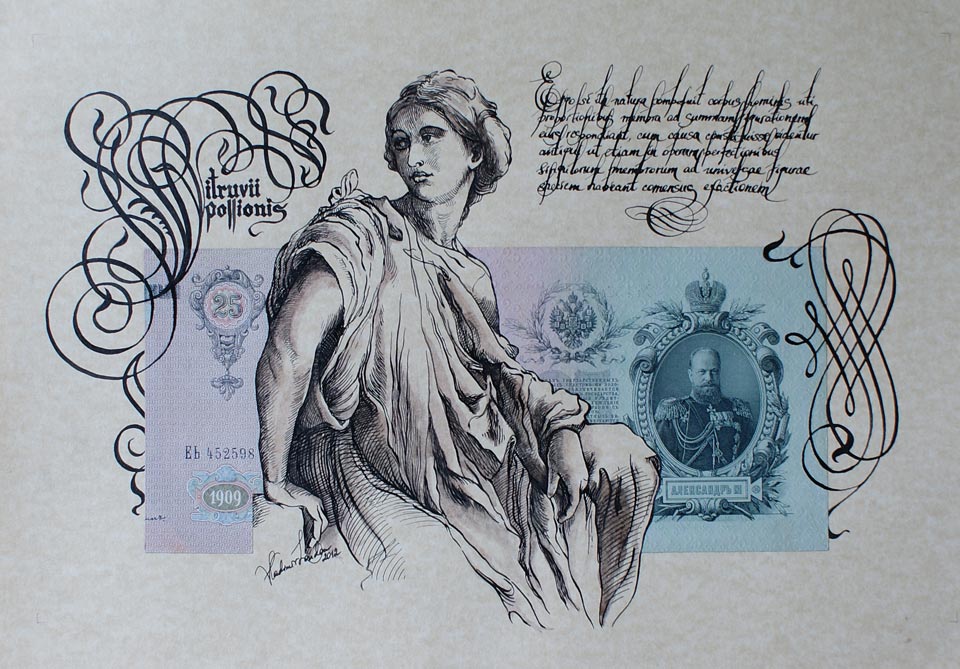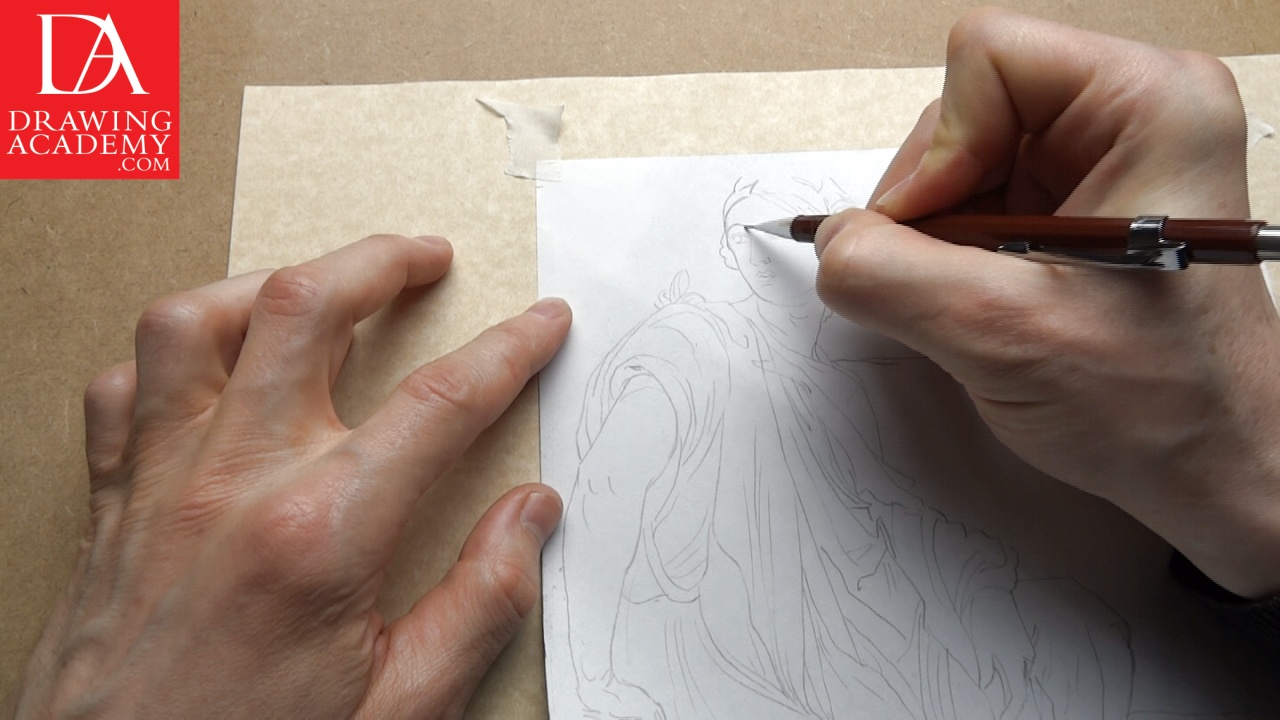Discover What is Art
In this video lesson, we will talk about What is Art. You will also discover how to integrate calligraphy writing into a black ink artwork, with brown wash, and an antique banknote collage.
This artwork combines three ingredients – a pen drawing of a female figure (after Renaissance painter Raphael); calligraphic text inspired by the ancient Roman writer, architect, and engineer, Vitruvius; and a highly decorative authentic banknote, dated 1909.
Enroll in the Drawing Academy Course
Pay once - Enjoy forever!
Only $297
What is Art

When it comes to the question of “What is Art” different artists and art critics have various opinions. For example, when Pablo Picasso was asked a question “What is Art?”, he answered with a question: “What Isn’t?”.
Every individual might decide for himself What is Art. Some say about “What is Art” that if an object is man-made and has no other purpose as to be admired then it’s Art. I leave you to decide for yourself What is Art.
This calligraphic artwork, featuring the antique banknote collage, is considered as Art today, however, 100 years ago it would be seen as ruined expensive banknote, which can be exchanged for 25 golden coins.
Calligraphy Artwork – First Steps
We begin this calligraphy task with the sketched female figure that is to be transferred onto a toned yellow paper.

This calligraphy artwork will be done on a high quality yellow-tint paper from the art supply shop.
The transferring of initial sketches onto the paper for a final calligraphy drawing was widely used during the Renaissance time, by Old Masters. These full-size sketches are called cartoons. There are many cartoons left with indications of how they were transferred.
The antique 25 rubles banknote will be part of this calligraphy artwork. This banknote dated back to 1909. At that time in the Tsar’s Russia, 25 rubles could easily have bought a three-bedroom house in the countryside. This note was backed up by real gold, so at the time this legal tender could have been converted into 25 golden coins.
Integrating a Female Figure into a Calligraphy Artwork
Now it’s time to make a drawing in black ink. A sharp pointed metal nib is what you need for this task.
Drawing by dip-pen with black ink is a very pleasurable experience. The nib allows you to make lines that vary in width, depending on how much pressure is applied to the pen.
In calligraphy, drawing with a dip-pen requires a certain amount of discipline. To make the lines, pull the pen over the paper, or move it sideways, but always in the direction towards yourself. You should avoid pushing the pen as it has a sharp point, and can easily damage the paper; it can also splatter the ink, and that is something you definitely do not want to have happen unexpectedly.
Black ink will make the same intensity black mark, whether you press the pen hard or not. Varying the pressure gives a different width to a line.
When making a calligraphy drawing, ink lines look more artistic if they start thin, go slightly wider, and end thin again. This is achieved by starting a line with very little pressure on the pen, gradually pressing it down more while you draw the line, and reducing the pressure as the line gets towards its end.
Calligraphy Lines
In calligraphy, every individual line contributes to the whole drawing and should be treated with due attention. The variety of lines in calligraphy is equally important. It’s not only the size and direction, but also how the lines exhibit the feeling of a particular texture.
Another little trick you can employ in calligraphy, is to get vibrant and professional looking lines, is to make a small gap inside the line; that way it becomes two unequal length lines, instead of one.
How to Hold a Pen in Calligraphy
In calligraphy art, it is very important how you hold a pen. Here is a quick test: take a pen in your hand and draw circles in one stroke on a piece of paper, as quickly as you can. Now, note whether your pen’s shaft is pointing directly to your right shoulder (if you’re right-handed), or towards your left shoulder (if you’re left-handed). If it does, the chances are that your circles are quite round, and accurate. They will start and end at the same point. However, if your pen is pointing somewhere away from the shoulder, it’s more likely that you are making ovals instead of circles; and their starting and ending points are not meeting.
Correct pen holding skills are essential when it comes to calligraphy ink drawing. This medium is very unforgiving; you cannot erase mistakes with an eraser, or wash them away with water. Every line needs to be precise and unique.
Here are the mechanics of pen holding. By holding a pen, with two fingers and a thumb, and with the pen’s shaft pointing towards the shoulder, you could make a downward stroke by contracting your fingers and thumb, and then an outward movement, by extending your fingers and thumb. Note that in this case the pen makes to-and-fro movements, with very few rises and falls. In this way, the fingers’ movements give a very slight drawing pressure. If however, the pen-shaft were pointing to a side, elbow, or somewhere away from the shoulder, controlling the directions of strokes, and the pen’s pressure, becomes much harder. You would need to control not only the direction of the strokes, but also the up-and-down movement of the pen’s tip. Of course, how you hold a pen is a habit, and it might take some time to change this habit.





Comments are closed.